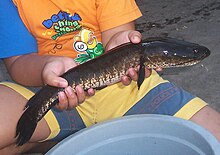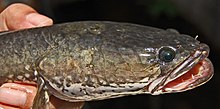
A vitamin is an organic compound required in tiny amounts for essential metabolic reactions in a living organism.The term vitamin does not include other essential nutrients such as dietary minerals, essential fatty acids, or essential amino acids, nor does it encompass the large number of other nutrients that promote health but that are not essential for life.
Vitamins are bio-molecules that act as catalysts and substrates in chemical reactions. When acting as a catalyst, vitamins are bound to enzymes and are called cofactors. For example, vitamin K is part of the proteases involved in blood clotting. Vitamins also act as coenzymes to carry chemical groups between enzymes. For example, folic acid carries various forms of carbon group – methyl, formyl and methylene - in the cell.
Until the 1900s, vitamins were obtained solely through food intake, and changes in diet (which, for example, could occur during a particular growing season) can alter the types and amounts of vitamins ingested. Vitamins have been produced as commodity chemicals and made widely available as inexpensive pills for several decades,allowing supplementation of the dietary intake.
Vitamin poisoningVitamin poisoning, or hypervitaminosis, refers to a condition of high storage levels of vitamins, which can lead to toxic symptoms. The medical names of the different conditions are derived from the vitamin involved: an excess of vitamin A, for example, is called "hypervitaminosis A".
High dosage vitamin A; high dosage, slow release vitamin B3; and very high dosage vitamin B6 alone (i.e. without vitamin B complex) are sometimes associated with vitamin side effects that usually rapidly cease with supplement reduction or cessation. Conversely, certain vitamins do not produce toxicity in excess levels. Vitamin C has been used in dosages over 100,000 mg for serious illness — over 1000 times the daily recommended intake — without ill effects.[citation needed] However, Vitamin C does have a pronounced laxative effect, typically when intake of vitamin C is in the range of 5-20 grams per day for a person in normal "good health".
OverdoseIn large doses some vitamins have documented side effects, that tend to be more severe with larger dosage. The likelihood of consuming too much of any vitamin from food is remote, but overdosing from vitamin supplementation does occur. At high enough dosages some vitamins cause side effects such as nausea, diarrhea, and vomiting. When side effects emerge, recovery is often accomplished by reducing the dosage. The concentrations of vitamins an individual can tolerate vary widely, and appear to be related to age and state of health.
High doses of mineral supplements can also lead to side effects and toxicity. Mineral-supplement poisoning does occur occasionally due to excessive and unusual intake of iron-containing supplements, including some multivitamins, but is not common. The Dietary Reference Intake recommendations from the United States Department of Agriculture define a "tolerable upper intake level" for most vitamins.
Overdose of Vitamin A -- Hypervitaminosis AHypervitaminosis A refers to the effects of excessive vitamin A (specifically retinoid) intake. Its occurs when the maximum limit for liver stores of retinoids is exceeded. The excess vitamin A enters the circulation causing systemic toxicity. Vitamin A in the form of betacarotene is only selectively converted into retinoids, and hence does not cause toxicity.
Although hypervitaminosis A can occur when large amounts of liver are regularly consumed, most cases of vitamin A toxicity result from an excess intake of vitamin A in the form of vitamin supplements. Toxic symptoms can also arise after consuming very large amounts of preformed vitamin A over a short period of time.
Presentation of effects include: * birth defects
* liver problems,
* reduced bone mineral density that may result in osteoporosis
* coarse bone growths
* hair loss
* excessive skin dryness/peeling
SignsSigns of acute toxicity include nausea and vomiting, headache, dizziness, blurred vision, and loss of muscular coordination.
Recommended supplement limitsThe Institute of Medicine has established Daily Tolerable Upper Levels (UL) of intake for vitamin A from supplements that apply to healthy populations, in order to help prevent the risk of vitamin A toxicity. These levels for preformed vitamin A in micrograms (µg) and International Units (IU) are:
* 0-3 years: 600 µg or 2000 IU
* 4-8 years: 900 µg or 3000 IU
* 9-13 years: 1700 µg or 5665 IU
* 14-18 years: 2800 µg or 9335 IU
* 19+ years: 3000 µg or 10,000 IU
The dose over and above the RDA is among the narrowest of the vitamins and minerals. Possible pregnancy, liver disease, high alcohol consumption, and smoking are indications for close monitoring and limitation of vitamin A administration. However, vitamin A has also been repeatedly tested and used therapeutically over several decades in larger amounts, 100,000 - 400,000 IU total dosage, for treatment of severe pediatric measles in areas where vitamin A deficiency may be present, in order to reduce childhood mortality.
Polar-bear liverThe liver of the polar bear is unsafe to eat because it is extraordinarily high in vitamin A. This danger has been recognized since at least 1597 when Gerrit de Veer wrote in his diary that, while taking refuge in the winter in Nova Zembla, he and his men became gravely ill after eating polar-bear liver.
Overdose of Vitamin B6 -- Impairment of proprioceptionAn overdose of pyridoxine can cause a temporary deadening of certain nerves such as the proprioceptory nerves; causing a feeling of disembodiment common with the loss of proprioception. This condition is reversible when supplementation is stopped.
Because adverse effects have only been documented from vitamin B6 supplements and never from food sources, only the supplemental form of vitamin B6 (pyridoxine) is discussed with respect to safety. Although vitamin B6 is a water-soluble vitamin and is excreted in the urine, very high doses of pyridoxine over long periods of time may result in painful neurological symptoms known as sensory neuropathy.
Symptoms include pain and numbness of the extremities, and in severe cases difficulty walking. Sensory neuropathy typically develops at doses of pyridoxine in excess of 1,000 mg per day.
However, there have been a few case reports of individuals who developed sensory neuropathies at doses of less than 500 mg daily over a period of months. None of the studies, in which an objective neurological examination was performed, found evidence of sensory nerve damage at intakes of pyridoxine below 200 mg/day.
In order to prevent sensory neuropathy in virtually all individuals, the Food and Nutrition Board of the Institute of Medicine set the tolerable upper intake level (UL) for pyridoxine at 100 mg/day for adults. Because placebo-controlled studies have generally failed to show therapeutic benefits of high doses of pyridoxine, there is little reason to exceed the UL of 100 mg/day.
Overdose of Vitamin C -- Vitamin C megadosage Vitamin C megadosage is the consumption of vitamin C in doses which are well beyond the current Dietary Reference Intake. Proponents advocate that this dose is similar to the intake of other primates not producing vitamin C, and is required to attain concentrations reached by most other animals, who produce vitamin C.
High doses have been used in an attempt to obtain specific therapeutic effectsThere is a strong advocacy movement for such doses of vitamin C, despite a lack of conclusive scientific evidence of the purported benefits.There also exists some literature critical of governmental agency dose recommendations.
Although vitamin C can be well tolerated at doses well above the RDA recommendations, megadosing may cause side effects such as stomach upset, laxative effects, diarrhea, or kidney stones. The dose at which these effects may occur varies with the individual. Some test-tube experiments have also suggested that Vitamin C can induce production of DNA-damaging compounds, and by implication, cancer growth. However, some test-tube evidence has shown that Vitamin C is toxic to cancer cells, which has prompted new phase I toxicity trials of high doses of intravenous Vitamin C to determine its safety as a treatment modality.
Overdose of Vitamin D -- Hypervitaminosis DHypervitaminosis D is a state of Vitamin D toxicity. Overdose occurs at more than 100 times the recommended daily allowance (roughly one bottle of vitamin D tablets per day), over a period of months. Acute overdose requires over 50mg (ten thousand times the RDA). Foods contain low levels, and have not been known to cause overdose. Overdose has occurred due to industrial accidents, for example when incorrectly formulated pills were sold or missing industrial concentrate cans misused as cans of milk.
Symptoms and presentationSymptoms of vitamin D poisoning include:
* Dehydration
* Vomiting
* Decreased appetite (anorexia)
* Irritability
* Constipation
* Fatigue
An excess of vitamin D causes abnormally high blood concentrations of calcium (hypercalcemia) which can eventually cause severe damage to the bones, soft tissues, and kidneys. It can also damage the kidney and produce kidney stones. Ongoing research indicates antagonism with oil soluble menatetrenone, MK-4, an internally transported natural form of vitamin K2, which is associated with bone formation and calcium retention in the bones.
Note: Hypervitaminosis D symptoms appear several months after excessive doses of vitamin D are administered. In almost every case, a low calcium diet combined with corticosteroid drugs will allow for a full recovery within a month.
source: http://en.wikipedia.org/
pic: http://images.jupiterimages.com/






 September is National Head Lice Prevention Month, which makes sense as kids go
September is National Head Lice Prevention Month, which makes sense as kids go 